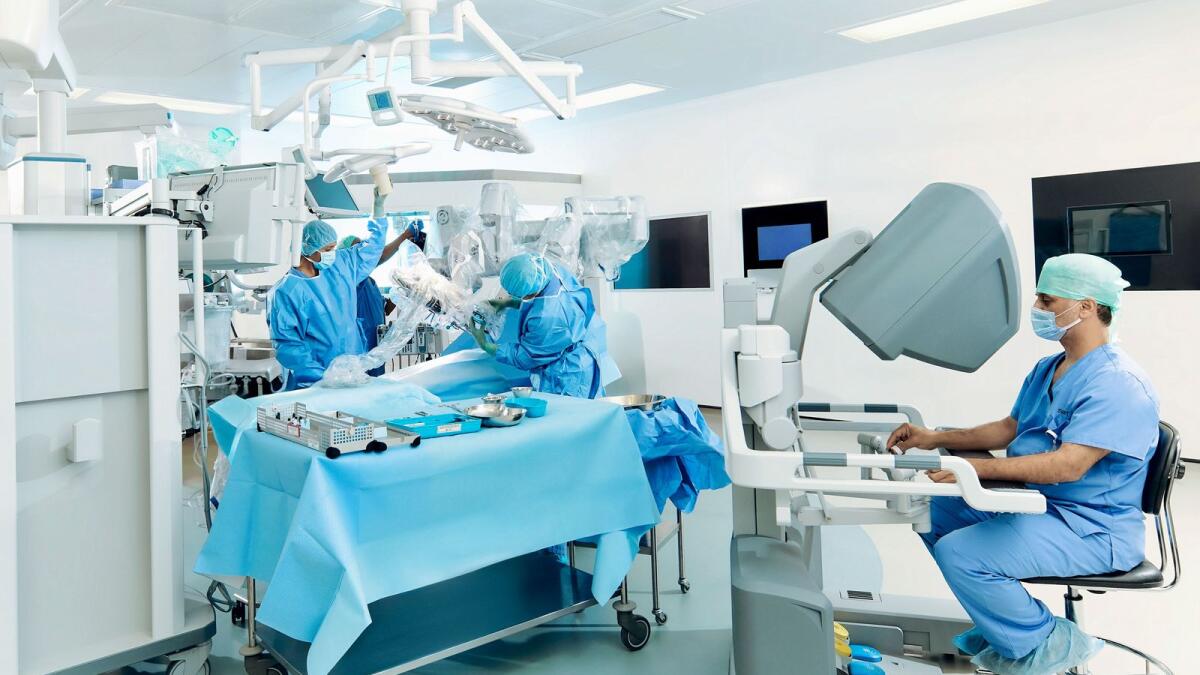Sheikh Shakhbout Medical City (SSMC), an Abu Dhabi-based hospital known for serious and complex care, recently achieved a milestone by successfully repairing a bile duct injury in an Emirati patient using innovative robotic surgery technology. The patient, a 30-year-old individual, was admitted to SSMC with clinical signs of bile duct injury, a rare complication that can occur after surgical procedures related to gallstones and acute cholecystitis. Radiological exams confirmed the injury, and the patient underwent a delayed repair using SSMC’s robotic-assisted surgical system, led by Dr. Salem Al Harthi, a consultant and chair of the surgery department at SSMC.
Dr. Al Harthi utilized the latest robotic-assisted surgical techniques to perform a precise repair of the bile duct injury through small incisions. The use of intra-venous dye, robotic magnification, and precise instrument control allowed for a successful anastomosis between the bile duct and small bowel, even under challenging anatomical conditions. The patient’s recovery was swift, and they were discharged within three days. Dr. Abdulqader Almessabi, acting chief medical officer at SSMC, commended the achievement as a testament to the hospital’s commitment to providing world-class healthcare through advanced technology and expertise.
Robotic-assisted surgery offers significant benefits to both surgeons and patients, allowing for highly intricate procedures with enhanced precision and control. For the multidisciplinary surgical team at SSMC, this technology provided unparalleled visualization of the bile duct anatomy, resulting in optimal outcomes for the patient. The success of this procedure further solidifies SSMC’s reputation as a center of excellence in healthcare, leading the way in personalized care in the UAE and the region. By leveraging cutting-edge technology and innovation, SSMC continues to deliver top-notch medical services to its patients.
The innovative approach taken by Dr. Al Harthi in repairing the bile duct injury showcases the potential of robotic-assisted surgery in tackling complex medical conditions. The use of advanced technologies such as robotic magnification and precise instrument control allows surgeons to perform delicate procedures with higher levels of accuracy. In this case, the robotic system facilitated a successful repair of the bile duct injury, demonstrating the effectiveness of minimally invasive techniques in healthcare. Patients can benefit from quicker recovery times and reduced risk of complications with robotic-assisted surgery, making it a promising option for various medical treatments.
As healthcare facilities seek to enhance patient outcomes and improve surgical techniques, the adoption of robotic-assisted surgery continues to grow. The success of the bile duct injury repair at SSMC highlights the potential of this technology in achieving superior results for complex cases. By combining expertise with cutting-edge tools, medical professionals can offer patients advanced treatment options and personalized care. With continued advancements in robotic surgery systems, the future of healthcare looks promising, with improved outcomes and a higher standard of patient care.





















